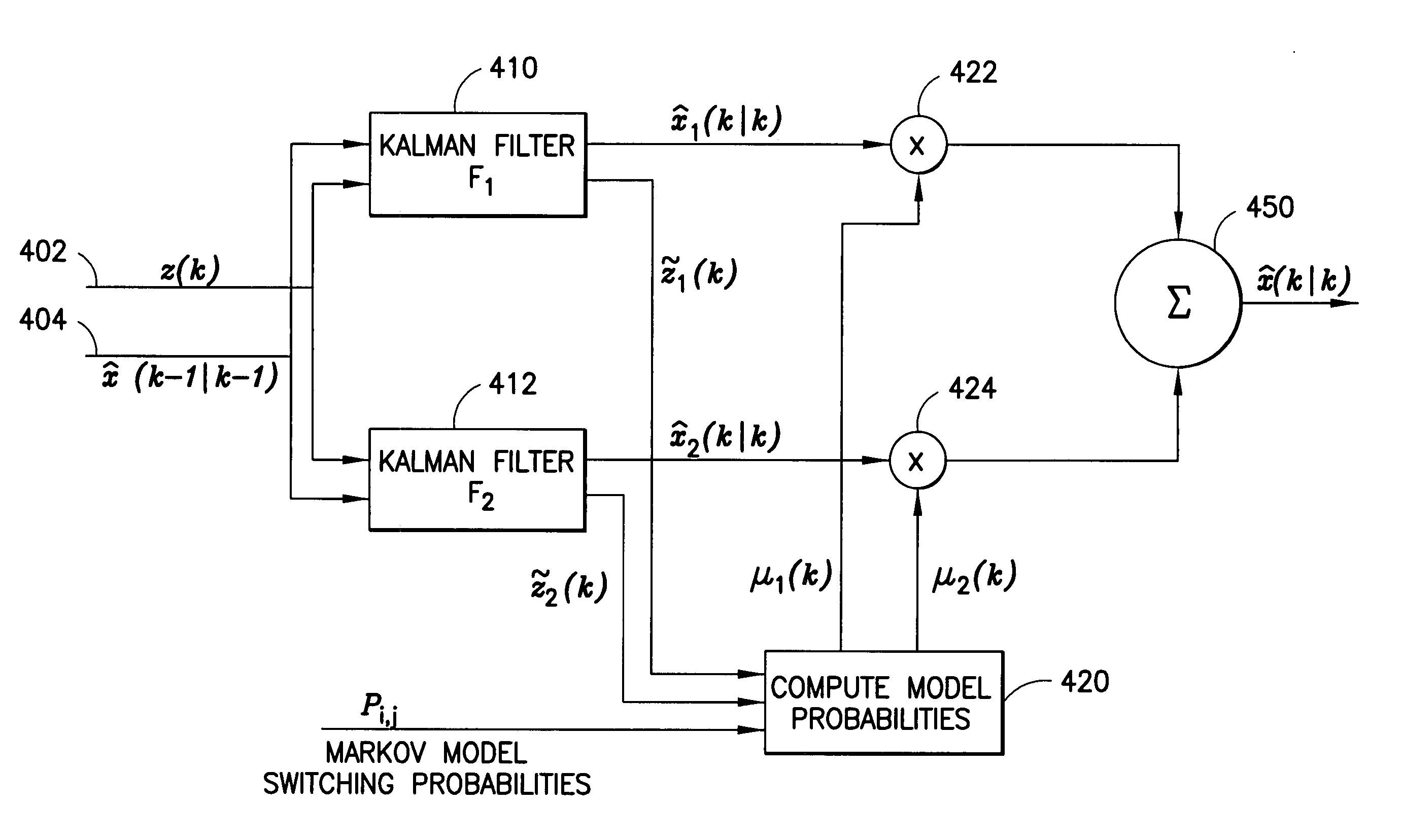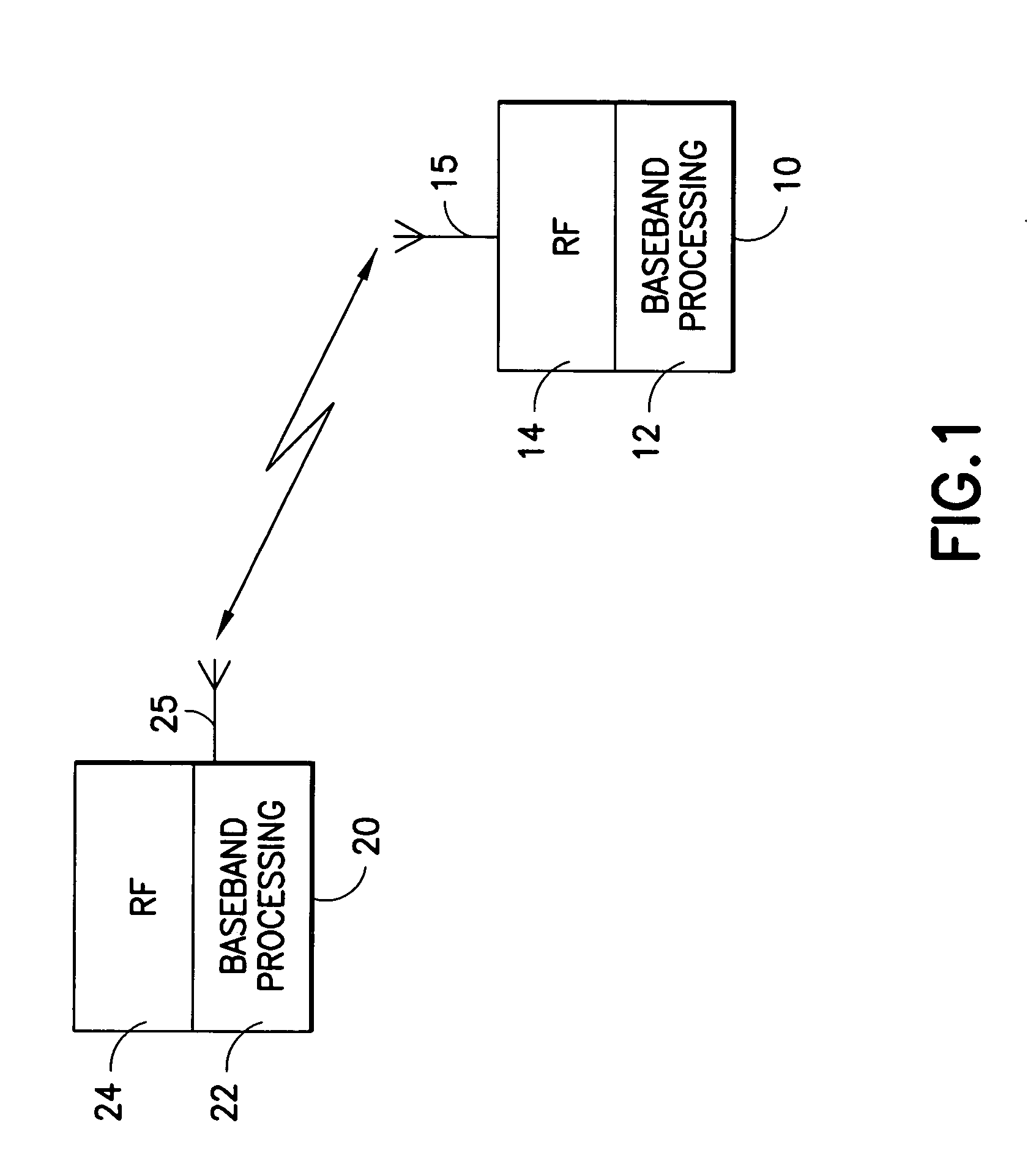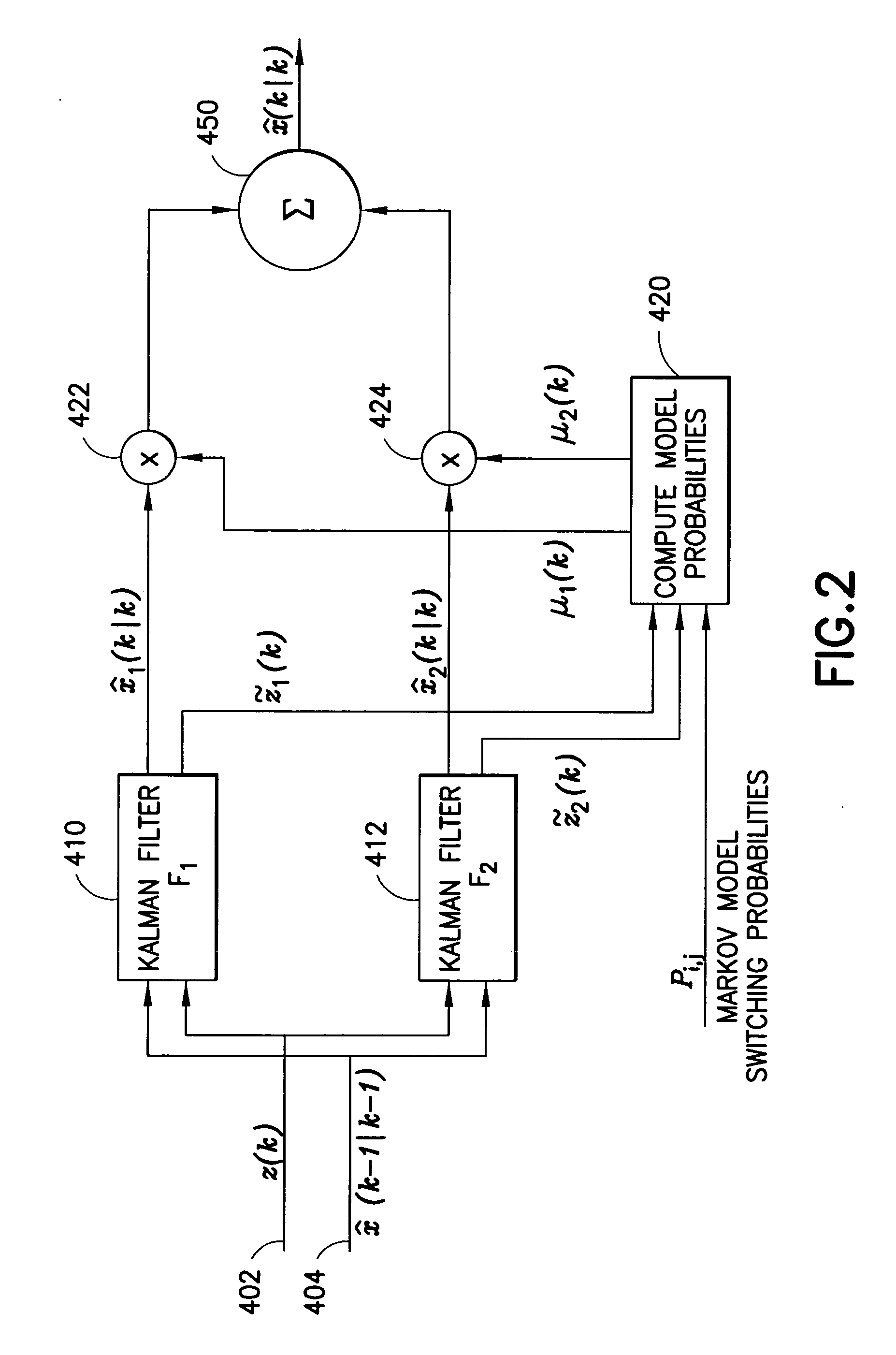Multiple hypothesis channel estimation and prediction for OFDM systems
a multi-hypothesis and channel estimation technology, applied in the field of estimating channel parameters, can solve the problems of reducing the amount of data-bearing traffic, complicating channel estimation and prediction in high-doppler user scenarios, and severely degrading detection performance to be unacceptable for a typical mobile user, so as to improve the estimation accuracy of the model
- Summary
- Abstract
- Description
- Claims
- Application Information
AI Technical Summary
Benefits of technology
Problems solved by technology
Method used
Image
Examples
Embodiment Construction
[0022] As the requirements for maintaining contact with a mobile station become more stringent, it is necessary to deal with situations in which the mobile station is traveling at a relatively high rate of speed. The environment, however, is typically not steady. An automobile traveling along a highway will be changing its direction with respect to the base station often. Classical Kalman filtering, as used in the prior art, can be used to track very accurately when an object has a constant velocity or constant acceleration trajectory. But in a maneuver (e.g. a curving trajectory) neither trajectory model is correct.
[0023] The method of the invention is to formulate a set of reasonable target models, construct Kalman filters for each model offline and then form a weighted combination of the estimates of each model to form a final estimate. The models act as “basis” functions that are used to cover a discrete set of possible models.
[0024] In the case of the channel estimation probl...
PUM
 Login to View More
Login to View More Abstract
Description
Claims
Application Information
 Login to View More
Login to View More - R&D
- Intellectual Property
- Life Sciences
- Materials
- Tech Scout
- Unparalleled Data Quality
- Higher Quality Content
- 60% Fewer Hallucinations
Browse by: Latest US Patents, China's latest patents, Technical Efficacy Thesaurus, Application Domain, Technology Topic, Popular Technical Reports.
© 2025 PatSnap. All rights reserved.Legal|Privacy policy|Modern Slavery Act Transparency Statement|Sitemap|About US| Contact US: help@patsnap.com



